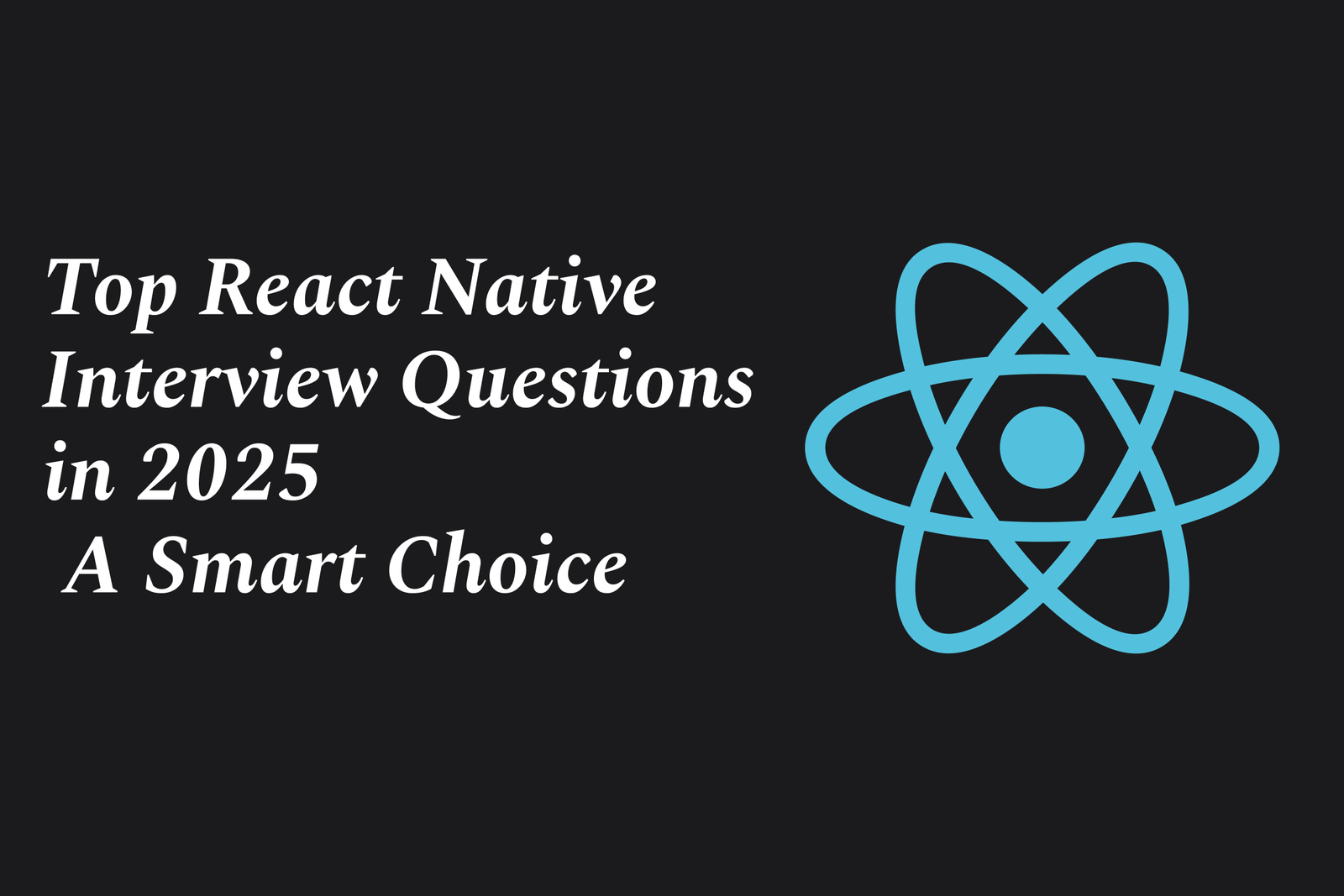Top React Native Interview Questions In 2025
Top React Native interview questions in 2025 focus on understanding its cross-platform capabilities, performance advantages, key components, state management, and integration with native modules, helping candidates demonstrate proficiency in building efficient, scalable mobile apps using JavaScript and React Native.
Top React Native Interview Questions in 2025
React Native, developed by Facebook, is a powerful open source JavaScript framework designed for building native mobile applications efficiently using a single codebase that works on both Android and iOS. As React Native continues to dominate the mobile development landscape, preparing for interviews in 2025 requires a sharp understanding of its core concepts and advantages.
1 ) What is React Native?
React Native is an open source framework by Facebook that enables developers to build native mobile applications using JavaScript and React. It leverages native components to provide a smooth, native like user experience across platforms.
2 ) How Does React Native Differ from React?
React is a library focusing on building user interfaces primarily for web applications utilizing a virtual DOM for rendering, while React Native is a full framework that compiles JavaScript code into native code for mobile platforms, allowing true native performance and behavior.
3 ) What Are the Benefits of Using React Native for Mobile App Development?
Cross platform compatibility: Write once, run on both Android and iOS.
Native performance: Access native components for optimized speed and responsiveness.
Reusable components: Boost development efficiency with modular, reusable UI elements.
Hot reloading: Accelerate development cycles by instantly reflecting changes without recompiling apps.
Large community and ecosystem: Access extensive libraries, tools, and support.
Cost effectiveness: Lower development and maintenance costs due to shared codebase.
4 ) How is Cross Platform Functionality Achieved in React Native?
React Native uses a single JavaScript codebase that is interpreted and compiled into native code for each platform. This abstraction allows developers to maintain one set of code that renders native UI components on both Android and iOS, ensuring broad compatibility and native aesthetics.
This concise overview of key questions and concepts is essential for anyone preparing for React Native interviews in 2025, ensuring a strong foundation in understanding the framework's architecture, benefits, and practical applications.
https://justacademy.in/news-detail/android-cloud-backup-features
https://justacademy.in/news-detail/flutter-accessibility-updates-2025
https://justacademy.in/news-detail/android-power-management-enhancements
https://justacademy.in/news-detail/flutter-for-logistics-and-delivery-apps
https://justacademy.in/news-detail/top-flutter-packages-to-use-in-2025
Related Posts
Java supports GDPR and data privacy by enabling secure data handling through encryption, controlled access, and precise data management. It allows developers to minimize PII exposure, ensure data confidentiality, and design workflows that comply with data protection regulations effectively.
Java code quality tools have evolved to include advanced static analysis, integrated security checks, and AI-powered code reviews. These updates help developers detect bugs, enforce coding standards, and enhance security, streamlining the development process and improving overall code reliability.
Java remains a cornerstone in big tech companies, evolving with modern features like records, pattern matching, and virtual threads. Its robust ecosystem, enhanced performance, and growing AI integrations keep it vital for both legacy systems and innovative new projects.
Java and CI/CD pipeline optimizations streamline Java application development by automating builds, tests, and deployments. They improve efficiency through parallelization, caching, and secure secrets management, enabling faster feedback loops and more reliable, scalable software delivery.
Java supports modern cryptography standards through its flexible Java Cryptography Architecture (JCA), enabling integration of advanced algorithms like AES, EdDSA, and post-quantum tools. Libraries like Bouncy Castle offer FIPS-certified, hardware-accelerated implementations for secure development.
Java 23 enhances record patterns by enabling concise, direct destructuring of record components within pattern matching, simplifying type checks and data extraction. This improvement boosts code readability and expressiveness by reducing boilerplate in handling immutable data classes.
Java remains a top choice for mobile app backends, powering scalable, secure, and high-performance server-side solutions. Latest trends include cloud-native microservices, reactive programming, and enhanced JVM optimizations, enabling efficient, flexible, and robust mobile backend development.
Java SE 24 and LTS Java SE 21 offer enhanced features and performance, while Apache Spark 4.0.0 introduces Scala 2.13 support and advanced ML and SQL capabilities. Together, they empower developers to build scalable, high-performance data applications with modern tools.
JUnit 5 modernizes Java testing with a modular architecture, improved assertions, and seamless Java 8+ support. Beyond JUnit, tools like Mockito and AssertJ enhance mocking and assertions, creating a powerful, flexible ecosystem for writing clean, efficient Java unit tests.
Java plays a pivotal role in cloud automation tools by providing a robust, platform-independent language used to build scalable automation frameworks like Jenkins and Selenium, enabling efficient CI/CD pipelines, testing, and orchestration across diverse cloud environments.










